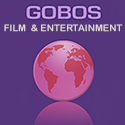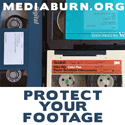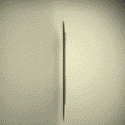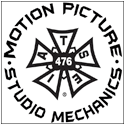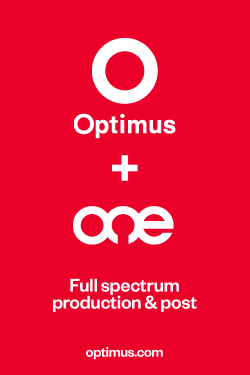
After months of careful consideration & hundreds of community votes, Camera Ambassador introduces this year’s 2021 Community Builders Grant winner Link Wolfe.
His team’s project Zero Mile Mark is a horror short film about a troubled teen who is forcibly sent to a wilderness retreat program in the woods for “rehabilitation.” We’re incredibly grateful for the opportunity to champion a film that bravely challenges the important yet under-covered troubled teen industry, an industry that Link’s family has a fatal & tragic personal connection with.
“I think [‘Zero Mile Mark’] can be a heart. I think it can be the emotion. You can read articles all day and some of them will connect for you and some of them won’t, but if you can experience an emotional point of view, then you may actually care. So that’s the hope that I have. It’s not necessarily that my film will be the whole movement, but rather it can be a part of it.”
Link Wolfe, 2021 Community Builders Grant Winner
As this year’s winner, Link & his team will receive…
- $5,000 in Gear Rentals from Camera Ambassador
- $3,000 in Film Funding Provided by Camera Ambassador
- 1-year Membership to IFA Chicago
- Coloring package by The Mill Chicago
- Audio package by Noisefloor Sound Solutions
- Casting Credit from Compass Casting
- COVID Set Safety Package by Chicago Compliance Specialists
- BTS Photography by Emma Thatcher Photography
- Free Consultation from the Chicago Film Office
- Free Submission to the Midwest Film Festival
- Promotional Interview with the Walkie Check Podcast
ALSO READ: Hayden5: Launches $15K Gear Grant for filmmakers
Q& A with Community Builders Grant Winner, Link Wolfe
The Q&A was conducted by Connor Allen Smith on behalf of Camera Ambassador with some questions offered up by the attendees of their live pitch event. (The following interviews have been lightly edited for brevity and clarity.)
CAS: So happy to have you, and thank you for putting together your wonderful pitch video! I think you have done a great job of really putting us in the story and displaying some of your director abilities right out of the gate.
LW: Appreciate it. Two hours in the woods can go a long way.
CAS: Let’s jump back into the woods actually. You’re going to be creating out in the wilderness literally. Talk to me about the process. Speak to the idea of the wilderness and speak to what you’ll be gaining by creating in the wilderness– instead of our city.
LW: This project is obviously based on some real-world events. Not just with my brother personally, that I spoke about, but also with these wilderness programs that exist all around the troubled teen industry that is made up of a lot more programs than just wilderness ones. But I wanted to pull from the one that I personally have the most experience with and that I know the most about. I also think that isolation is the key part of the fear for me, so going somewhere where there aren’t people around where the only people that are there are [our characters] Andre and Leicester helps us get into that mindset of not knowing essentially whether the reality we’re seeing is the one that is true or whether it is a figment of either Andre or Lester’s imagination.
CAS: Let’s talk about genre a bit. Why horror for this story, as opposed to a traditional drama or tragedy?
LW: This is a funny question. I think I’m going to get this question a lot. I’ve gotten it already and I’ll probably get it as I continue to fundraise for this project and promote it. It’s interesting if you make a drama, if I had come in with a project that was a drama, I don’t think we would ask this question. It is what it is to be fair. I’m not criticizing. I think it’s a great question, but I think that when we choose a genre, whether it’s comedy as the past two of my projects or horror for this, there feels almost a need to justify it, right? Because it’s somehow different. It’s not the expected. It’s not what we’re used to. But when I think of these experiences, when I listened to these survivors speak, and when I think about what my brother looked like and felt like after he came back, the clearest emotion is fear.
It’s not sadness, it’s not drama, it’s fear. So when I went to go write this, I didn’t necessarily set out with the intention of writing a horror movie. I wrote a movie that I would express and capture that sense of fear. And I think that that tool of horror is the best genre for that.
I don’t want to get too like heady with it. But when I was first getting into film, I was really getting into the film theorist, Linda Williams, who wrote about bodies genres [horror, melodrama, & pornography]. We experience these those stories in a way beyond thought– we experience them with our bodies. When you watch horror: you sweat, your eyes go wide, your blood pumps. If we can create that in the audience member, that emotion, that real feeling with their whole body we’ll do more, not just to help the cause that we want to help, but also to have a real emotional impact on them.
CAS: Thank you for answering that question in such a holistic way. I think it’s important that we do a bit of diagnostics with how we perceive genres.
Also, with you pulling from that autobiographical kernel, that fear is so generous of you as a creator and really brave.
LW: Thank you.
CAS: I don’t want to continue picking at it, but one last question about the idea of genre since you have decided to label it: Are there any specific devices or films that you’re using as reference points that you’re looking to bring to “Zero Mile Mark?”
LW: I got really into horror a couple of years ago. I suffered from some not great anxiety and in a weird way when I went to watch horror, the catharsis of it helps me relax. There’s a period of horror around the 70s, 80s, that I don’t know if there’s an official term for it, but I would probably call it like quiet horror that I think is really inspirational [ for “Zero Mile Mark”]. The film Wicker Man and by Robin Hardy that film does an excellent job of making, not just the character, but the audience feel like they’re being watched, even though you never necessarily see what the monster.
Additionally, Takashi Miike’s “Audition” that’s one of my favorite horror movies of all time. It’s an excellent example where the scariest parts are not when there’s a monster on screen, it’s not when there’s a lot of sound, it’s not when there’s a bunch of things. It’s when there’s the girl, the main fear factor is standing in the middle of the street, staring directly into the camera.
The last thing I would probably reference– and I know I’m probably going on too long, but I love talking about movies –is Na Hong-jin’s “The Wailing.” It’s shot in the wilderness. When I was talking with my cinematographer, Brendan Hoyt, we were talking about this as a visual reference.
CAS: You have such a lush palette to launch off of.
We have a question submitted from the community: With a story that’s so personal and holds trauma in different ways, how do you plan on creating space for care throughout this process and on set? Also with you pulling from that autobiographical kernel, that fear is so generous of you as a creator and really brave.
LW: Yeah, absolutely. It’s been a hard film to work on. And the person that I want to take the time to shout out here is my producer, Jody Bailey. Her care as a producer, as a story editor has allowed me to write this film and to work on it and to honestly use it almost as a form of therapy. There’s a lot of stuff in the wake of that [experience], I didn’t deal with. And it’s actually been really healthy for me finding that space in writing.
In terms of creating space on-set, it’s really important to us that the actor that we bring in to play Andre is not to be a minor. We want them to be an adult. We want them to be someone who is in a state of mind, in a state of body, where they can make this choice and feel secure in that and where they can access those emotions on-set.
For the day-to-day on-set with a film like this, where we are accessing painful emotions, I intend to build the schedule in a where we’re not pushing our actors 24/7 take-to-take into take. We’ll actually build into the schedule time for them to meditate, to heal, to take the pace that they need so that we can continue. Obviously I think there’s no way that we can avoid the pain that it will cause to access some of this stuff. But I want to make sure that we do it in an environment where our actors and our crew feel safe.
CAS: Let’s close with one more submitted by the community: Can you speak to the social impact in the spotlighting and condemning these kinds of programs through a story will have?
LW: I want to start by shouting out an organization that’s doing a lot of work around this, #breakingcodesilence, which we talked about in the pitch video. They’re doing a lot of the activistism and journalism work around creating, getting essentially material out to people.
I think that the role of activism, the role of journalists and the role of documentaries is to inform it’s, to let people know and to push people towards action. I think that’s an incredibly important part of that. I think where my film can come in it can be a heart. I think it can be the emotion. You can read articles all day and some of them will connect for you and some of them won’t, but if you can experience an emotional point of view, then you may actually care. So that’s the hope that I have. It’s not necessarily that my film will be the whole movement, but rather it can be a part of it.
COMMUNITY BUILDERS GRANT is a short-form film fund and production resources grant sponsored by Camera Ambassador. Their mission is to help build bridges between filmmakers and the community while elevating their production by arming them with the necessary tools to create. This grant supports artists with varying levels of experience, both to recognize accomplished individuals, as well as to provide opportunities for young and emerging artists. Past winners have gone on to screen at renowned festivals, e.g., Chicago International Film Festival & the Midwest Film Festival.
For national news coverage go to Reel360.com










